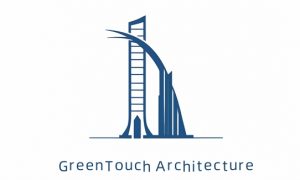Logos hold significant importance in the construction industry. Logos serve as visual representations of a company’s identity and values. A well-designed logo can convey professionalism and reliability. The construction industry often relies on logos to establish trust with clients. AI and traditional methods offer different approaches to logo design. AI provides speed and efficiency in creating logos. Traditional methods focus on creativity and personal touch. Both methods play crucial roles in shaping effective logos for construction companies.
Understanding AI in Logo Design
Definition and Key Concepts
What is AI in design?
AI, or artificial intelligence, refers to the use of computer systems to perform tasks that typically require human intelligence. In design, AI involves algorithms that can analyze data and make design decisions. These systems learn from patterns and improve over time. AI in design aims to automate creative processes and enhance efficiency.
How AI tools work in logo creation
AI tools for logo creation use machine learning algorithms. These algorithms analyze existing logos and design elements. The tools generate new designs based on this analysis. Users input preferences such as color and style. The AI then creates multiple logo options. Designers can select and refine these options to suit their needs.
Evolution of AI in the Design Industry
Historical development
The development of AI in design began with basic automation tools. Early AI systems focused on simple tasks like color matching. Over time, advancements in computing power enabled more complex applications. Machine learning and neural networks became integral to design processes. These technologies allowed AI to handle intricate design tasks.
Current trends and innovations
Current trends in AI design include personalized design experiences. AI systems now offer tailored design suggestions based on user data. Innovations also focus on real-time collaboration between AI and human designers. AI tools provide instant feedback and suggestions during the design process. This collaboration enhances creativity and efficiency in logo creation.
Advantages of Using AI
Efficiency and speed
AI offers significant advantages in efficiency and speed. AI tools can generate multiple logo designs in minutes. This rapid production benefits projects with tight deadlines. Construction companies often face time constraints. AI allows them to meet these demands without sacrificing quality.
Cost-effectiveness
AI provides a cost-effective solution for logo design. Traditional design methods often involve high costs due to manual labor. AI reduces these expenses by automating many design tasks. Companies save money while still achieving professional results. This cost-effectiveness makes AI an attractive option for construction firms.
Limitations of AI
Lack of creativity
AI in logo design often lacks the creative flair that human designers bring. Algorithms rely on data and patterns, which can limit originality. Unique and imaginative designs require human intuition and artistic insight. AI tools generate logos based on existing templates and styles. This approach may lead to repetitive and uninspired results. Construction companies seeking distinctive branding may find AI-generated logos less appealing. Human designers can infuse logos with personality and emotion, enhancing brand identity.
Dependence on technology
AI tools depend heavily on technology and data availability. Reliable internet access and advanced software are essential for AI operations. Technical issues or software limitations can disrupt the design process. Construction firms must invest in technology infrastructure to utilize AI effectively. This dependence may pose challenges for smaller companies with limited resources. Traditional methods offer more flexibility and do not rely on digital platforms. Human designers can adapt to changing circumstances without technological constraints.
Traditional Methods in Logo Design

Definition and Key Concepts
What are traditional design methods?
Traditional design methods involve human creativity and craftsmanship. Designers use manual techniques to create logos. These methods rely on artistic skills and intuition. Designers often sketch ideas by hand. The process includes brainstorming and conceptualization. Designers focus on originality and expression.
Techniques used in traditional logo creation
Traditional logo creation uses various techniques. Hand-drawing remains a popular method. Designers use pencils, pens, and paper. This approach allows for detailed sketches. Designers also use painting and illustration. These techniques add color and texture. Typography plays a crucial role. Designers select fonts that match the brand’s identity. The process involves trial and error. Designers refine ideas until achieving the desired result.
Evolution of Traditional Design
Historical significance
Traditional design has a rich history. Early logo designs appeared in ancient civilizations. Craftsmen used symbols to represent businesses. The Industrial Revolution brought new opportunities. Companies needed logos for branding. Traditional methods flourished during this period. Designers created iconic logos that endure today.
Adaptation over time
Traditional design has adapted over time. New tools and materials emerged. Designers embraced digital technology. Software programs enhanced traditional techniques. Designers combined manual skills with digital tools. This integration improved efficiency and precision. Traditional methods continue to evolve. Designers find innovative ways to express creativity.

Advantages of Traditional Methods
Creative freedom
Traditional methods offer creative freedom. Designers have control over every aspect. The process encourages experimentation. Designers explore different styles and concepts. The absence of constraints fosters innovation. Creativity thrives in a flexible environment. Designers produce unique and memorable logos.
Personal touch and uniqueness
Traditional methods provide a personal touch. Designers infuse logos with individuality. The process reflects the designer’s vision. Each logo carries a distinct character. Personalization enhances brand identity. Clients appreciate the uniqueness of custom designs. Traditional logos stand out in a competitive market.

Limitations of Traditional Methods
Time-consuming process
Traditional logo design methods often involve lengthy processes. Designers spend considerable time brainstorming and sketching ideas. Each step requires careful attention to detail. Manual techniques demand precision and patience. Designers refine concepts through multiple iterations. The process includes client consultations and feedback sessions. These stages extend the timeline for project completion. Construction companies with tight schedules may find this challenging. Delays in logo delivery can impact branding strategies.
Higher costs
Traditional logo design incurs higher costs compared to AI methods. Skilled designers charge premium fees for their expertise. The manual nature of traditional design increases labor expenses. Customization adds to the overall cost. Unique designs require specialized skills and tools. Materials for hand-drawing and painting contribute to expenses. Construction firms must allocate significant budgets for traditional logos. Smaller companies may struggle to afford these services. Cost considerations influence the choice of design method.
Comparative Analysis in the Construction Industry
Similarities Between AI and Traditional Methods
Goal of creating effective logos
Both AI and traditional methods aim to create effective logos for the construction industry. Effective logos help companies establish a strong brand identity. Logos convey professionalism and trustworthiness. Both methods focus on achieving these goals through design.
Use of design principles
AI and traditional methods use fundamental design principles. These principles include balance, contrast, and alignment. Designers apply these principles to create visually appealing logos. Consistency in design principles ensures that logos communicate the intended message. Both methods rely on these principles to guide the design process.
Differences in Approach and Outcome
Process and tools used
AI and traditional methods differ in their processes and tools. AI uses algorithms and machine learning to generate logos. AI tools analyze data and produce designs quickly. Traditional methods involve manual techniques and artistic skills. Designers use tools like pencils, brushes, and digital software. The process for traditional methods requires more time and creativity.
Final product characteristics
The final products from AI and traditional methods exhibit distinct characteristics. AI-generated logos often have a modern and sleek appearance. These logos may lack unique artistic elements. Traditional logos showcase creativity and personal touch. Handcrafted elements add uniqueness to traditional logos. Construction companies choose between modern efficiency and artistic expression.
Future Trends and Integration
Emerging Trends in Logo Design
AI advancements
AI continues to transform logo design in the construction industry. New algorithms enhance creativity and efficiency. AI tools now offer more personalized design options. These tools analyze user preferences and generate tailored logos. AI advancements improve collaboration between designers and machines. Designers receive instant feedback and suggestions from AI systems. This interaction boosts innovation and productivity in logo creation.
Revival of traditional techniques
Traditional techniques experience a resurgence in logo design. Designers embrace hand-drawn elements and craftsmanship. The construction industry values the personal touch of traditional methods. Designers combine old techniques with modern tools. This blend creates unique and memorable logos. Traditional methods offer a sense of authenticity and originality. Clients appreciate the distinct character of handcrafted designs.

Potential for Integrated Approaches
Combining AI and traditional methods
Combining AI with traditional methods offers new possibilities. Designers use AI tools to generate initial concepts. Traditional techniques refine and personalize these ideas. This approach balances efficiency with creativity. Construction companies benefit from fast and unique logo designs. The integration of AI and traditional methods enhances design quality. Designers achieve innovative results through this collaboration.
Benefits of a hybrid approach
A hybrid approach provides several advantages. Designers enjoy creative freedom while maintaining efficiency. AI handles repetitive tasks, allowing designers to focus on artistry. The construction industry gains access to diverse design options. Hybrid methods produce logos that resonate with clients. Companies achieve a competitive edge through distinctive branding. The combination of AI and traditional methods supports innovation and growth.
AI and traditional methods each offer unique benefits for designing construction logos. AI provides speed and cost-effectiveness, while traditional methods deliver creativity and personal touch. Selecting the right approach depends on specific needs and resources. A balanced strategy that integrates both AI and traditional techniques can enhance logo design. This hybrid approach combines efficiency with artistic expression, offering a competitive edge in the construction industry.

CommentsTake the first comment